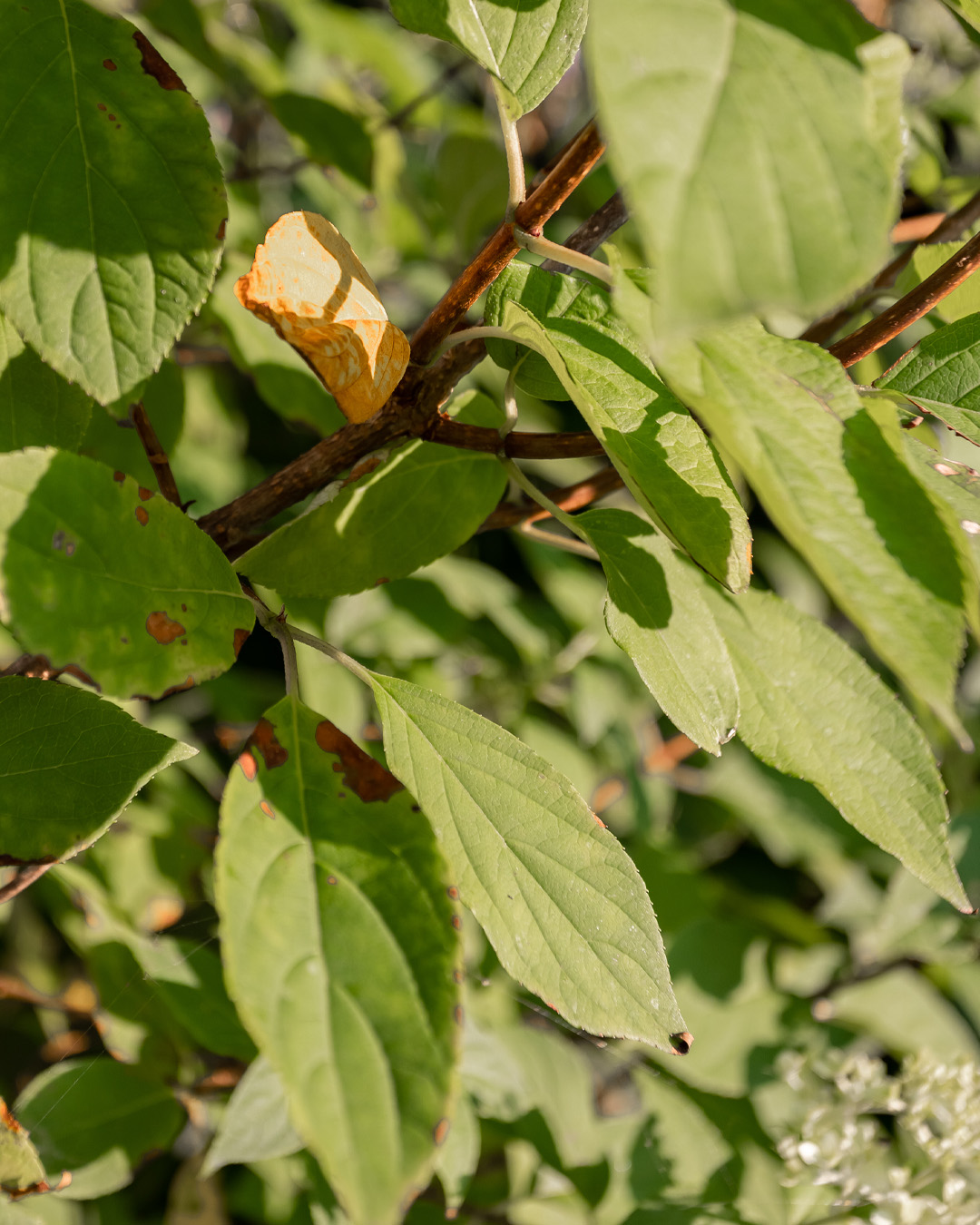The 20-Second Trick For Hydrangea Leaves Turning Yellow
More About Hydrangea Leaves Turning Yellow
Table of ContentsIndicators on Hydrangea Leaves Turning Yellow You Need To KnowThe Best Guide To Hydrangea Leaves Turning YellowThe 7-Minute Rule for Hydrangea Leaves Turning YellowThe Single Strategy To Use For Hydrangea Leaves Turning YellowOur Hydrangea Leaves Turning Yellow DiariesThe Facts About Hydrangea Leaves Turning Yellow RevealedThe 7-Second Trick For Hydrangea Leaves Turning YellowThe Best Guide To Hydrangea Leaves Turning Yellow
You can attempt to stop fungal illness by keeping your yards cool and complimentary of debris. These fallen leaves that will certainly remain, waiting to attack in the following growing season.These can be discovered at garden. Keep in mind to comply with the instructions on the tag of the fungicide you buy. Copper fungicides are, yet if they are overused they can become poisonous to your plant. Eliminating infected fallen leaves is additionally an excellent step. Clip the fallen leaves, and remove them from the yard.
If they aren't obtaining sufficient water, their fallen leaves will brownish. Hydrangeas have a in the midday sun, and recuperating when the sunlight has changed and the plants have a long time to recover. If this takes place repeatedly you might discover brownish and crunchy fallen leaves that are drooping. This is their means of letting us understand that it requires some additional moisture.
Examine This Report about Hydrangea Leaves Turning Yellow
To promptly remedy this, you will want to water your hydrangeas!.?. !! Water them gradually so the plants can take in that water. Typically in areas where plants have come to be dried, the dirt is completely dry and the drainage of water comes to be a problem. Adding water to very dried dirt and the problem will not fix itself.
If this is a recurring concern, you probably require to reassess your watering routine. Developed plants might need to be watered one to three times each week, relying on your problems. These bushes will do best with one inch of water each week. It may seem tempting to spray the fallen leaves down.
Water the base of the plant,. When the plant has recoiled, you can return to a routine watering schedule.
A Biased View of Hydrangea Leaves Turning Yellow
The container should be big sufficient so the plant can grow and get every one of the water and nutrients it needs. Location the container on a porch, or in a shady area on a patio area. You can also replace the plant with a panicle hydrangea. Panicles like the complete sun.
No matter of the selection, plan in advance and make certain your plant has lots of security from the wind. You might hair transplant to a brand-new area, or you can produce a wind barrier utilizing another plant, or fencing.
Decorative grass, Rose of Sharon, or Holly bushes are simply a couple of concepts of plants you might utilize to obstruct the wind. If you require to hair transplant, discover an area in your garden that is well secured from sunlight and wind. Hair transplanting is finest carried out in the autumn or the springtime.
Not known Details About Hydrangea Leaves Turning Yellow
All of the above situations could take place to any type of garden enthusiast. Luckily for everybody, hydrangeas are extremely resilient, and will certainly most likely recoup really quickly with a little love and treatment. The plants place is the most crucial aspect when it involves obtaining well-known and appropriate development. With a little forethought on planting area and appropriate upkeep, you'll be able to guarantee your hydrangeas!.
So, if Hydrangea leaves turn yellow and diminishes later, it's typically due to overwatering, as the plant can not uptake water and loses the leaves to remove transpiration. Following this, Hydrangea leaves begin to sag and wilt. Considering that both problems can develop yellow leaves, you ought to detect the difference between the overwatered and underwatered plant.
You can save the plant from yellow leaves by using it the proper light and placement. If your plant obtains yellow fallen leaves, relocate it to a dark location.
Fascination About Hydrangea Leaves Turning Yellow
Keep in mind, Hydrangeas are just frost forgiving in fall and pop over to this site winter season as they go dormant, and temperature alterations can trigger yellowing leaves and brown spots. If it obtains also cozy, the edges of the leaves become yellow, transform brownish and create a crispy texture. Relocate your potted Hydrangeas far from breezy north-facing windows in the wintertime.

Hefty soil can quickly block the oxygen supply to the roots and sever the link with the upper parts of the plant (fallen leaves) (Hydrangea Leaves Turning Yellow). Hydrangea leaves transform their shade if they find minor aggravations in the dirt composition. This problem can create the Hydrangea entrusts to transform yellow, experience fallen leave declines, and render a droopy plant compatible overwatering
Yellow fallen leaves in Hydrangeas are the very first indications of illness infestation, typically complied with by black areas, browning, drops, and wilting. Isolate the diseased or pest-infested plant from the healthy plants to stop illness spread. If it is a garden plant, remove all the contaminated fallen leaves making use of sterilized devices and tidy up all the debris.
The Single Strategy To Use For Hydrangea Leaves Turning Yellow
Cutting off aids Hydrangea shade unneeded weight and protection, allowing the growth of brand-new leaves. The most effective look at here time to prune Hydrangeas is springtime when the plant prepares to grow foliage for the following season. Inspect for spent or infected leaves and reduce the base of a stalk that joins the fallen leaves and stem.
Avoid reducing healthy or eco-friendly fallen leaves, and do not remove even more than 25% of the plant's vegetation. Gather the disposed of leaves to shed or compost them. The main reason behind the red fallen leaves in Hydrangea is poor dirt or ecological conditions. If Hydrangea leaves have a white fine-grained substance on them, it indicates Powdery Mildew infection.

What Does Hydrangea Leaves Turning Yellow Do?
There are 6 primary reasons that this could take place:: The plant does not obtain enough sunlight.: The roots are either as well damp or also dry.: The plant is also cold.: The dirt is not acidic or alkaline enough for the hydrangea.: The plant isn't getting the ideal nutrients it requires to remain healthy and balanced.
Each reason affects the plant in a way that can be repaired if we understand how to care for hydrangeas the right means. When we chat concerning poor light for hydrangeas, we suggest that the plant isn't obtaining sufficient sunlight.
Without adequate sunshine, the fallen leaves can turn yellow, the plant can become weak, and it could generate fewer blooms. To make certain a hydrangea receives sufficient light, it should be placed in a spot where it can enjoy the early morning light and be safeguarded from the intense afternoon sunlight. Overwatering is when a hydrangea plant gets even more water than it requires.
Hydrangea Leaves Turning Yellow for Beginners
Without enough air, the origins can't do their task well, and the plant begins to experience. Yellow fallen leaves may be a sign that the plant is obtaining also much water. On the other hand, dehydration takes place when the plant does not obtain sufficient water. Like people, plants need water to stay healthy.
This issue prevails in the fall as the climate changes or if a hydrangea is planted in a spot where it does not get sufficient heat from the sunlight. It is necessary to recognize the best problems for hydrangeas to stay clear of low-temperature tension. The majority of hydrangeas grow finest in areas 6 to 9, where the environment is milder.
It is very important to know that this kind of yellowing is different from the yellowing brought on by troubles like excessive water or not enough Full Article light. Consequently, if the yellow leaves are mainly at the end of the plant and the remainder of the plant looks healthy and balanced, it can simply mean that the leaves are simply getting old.